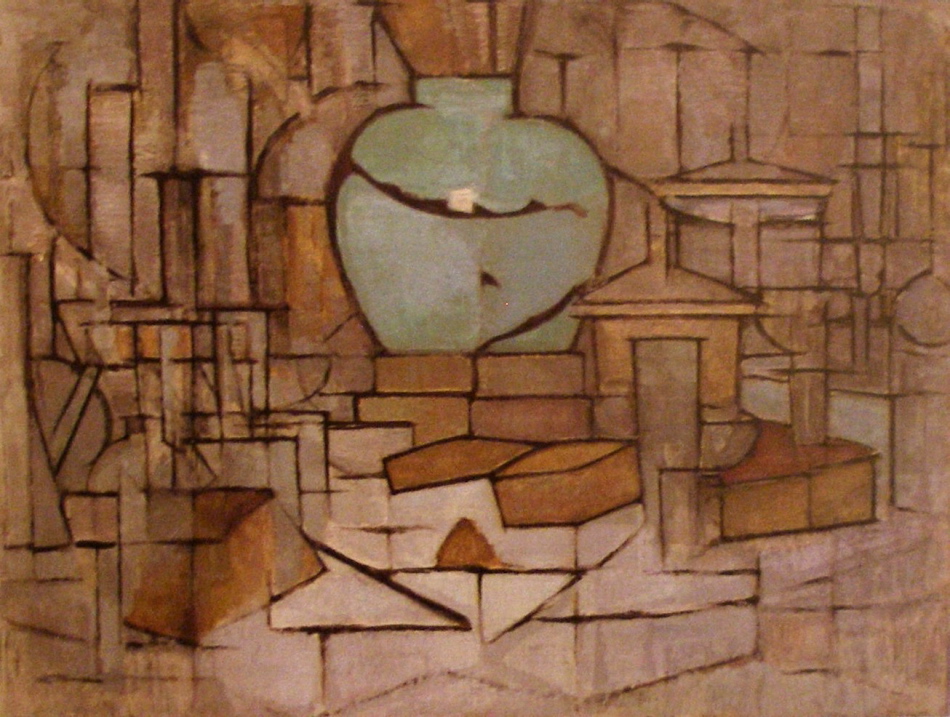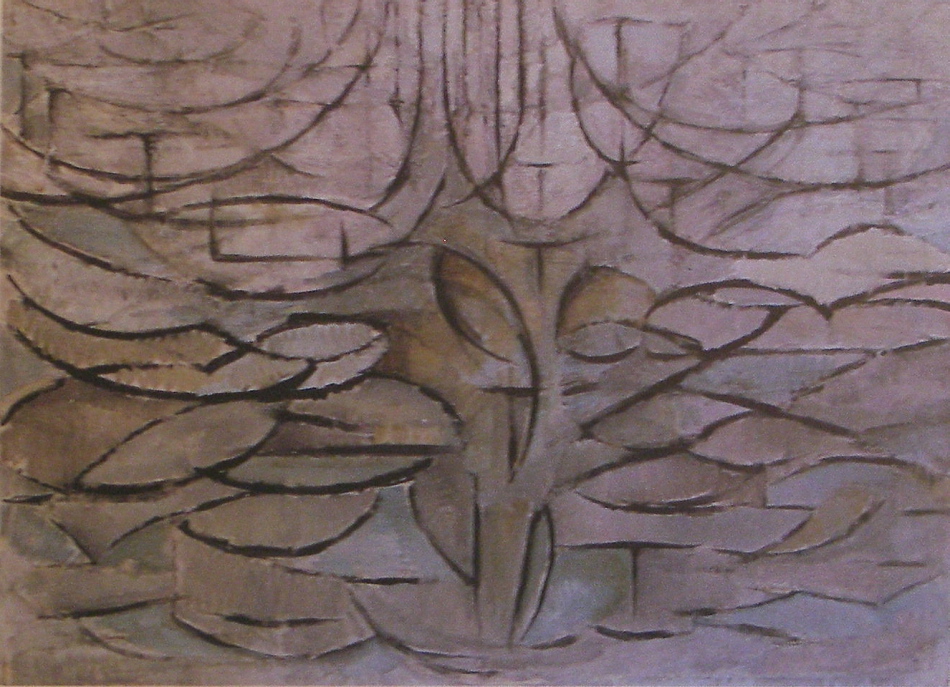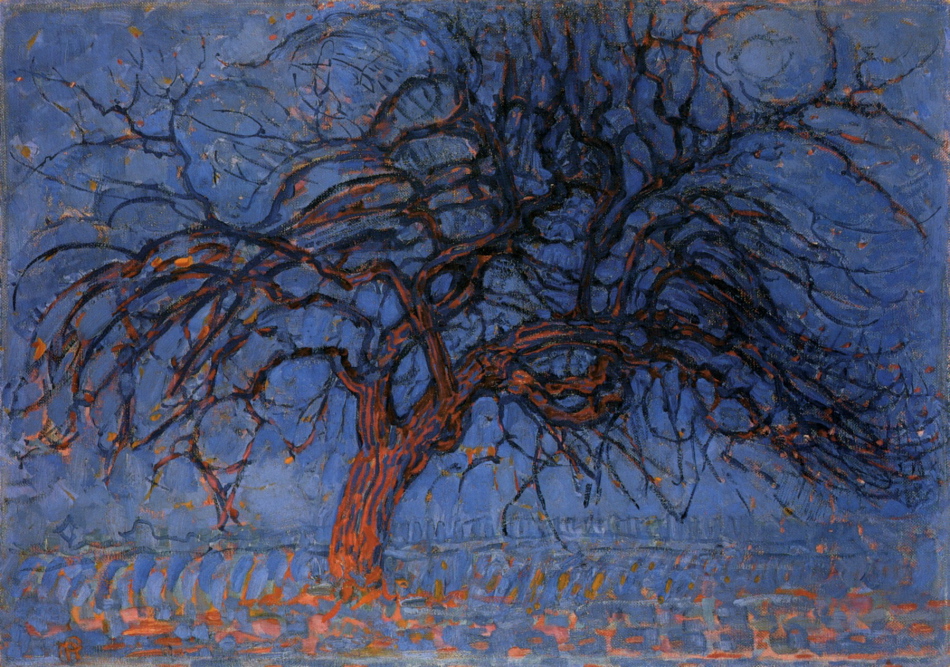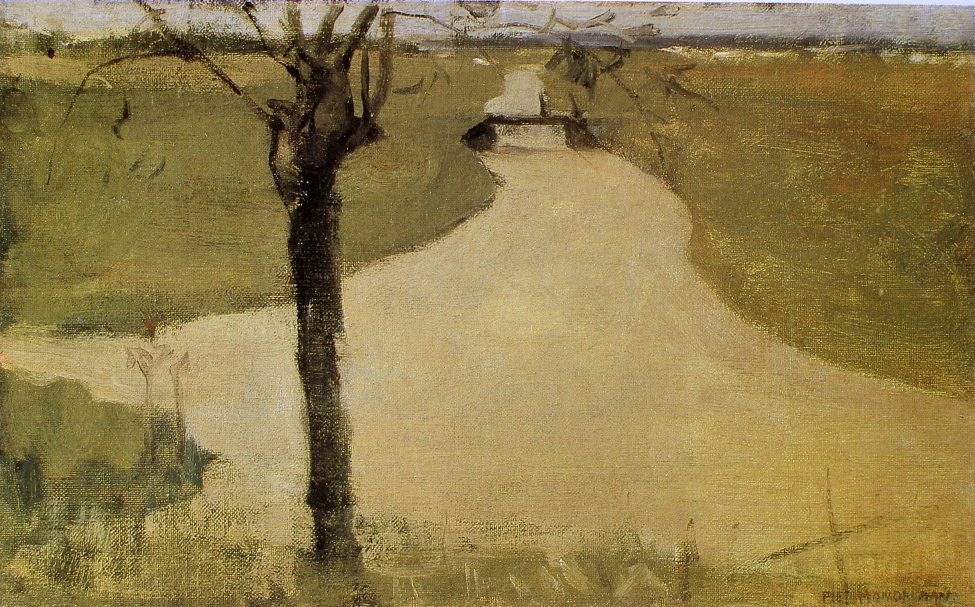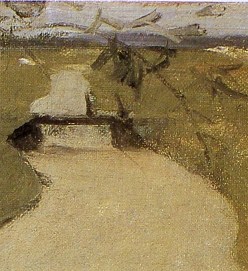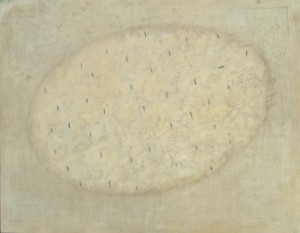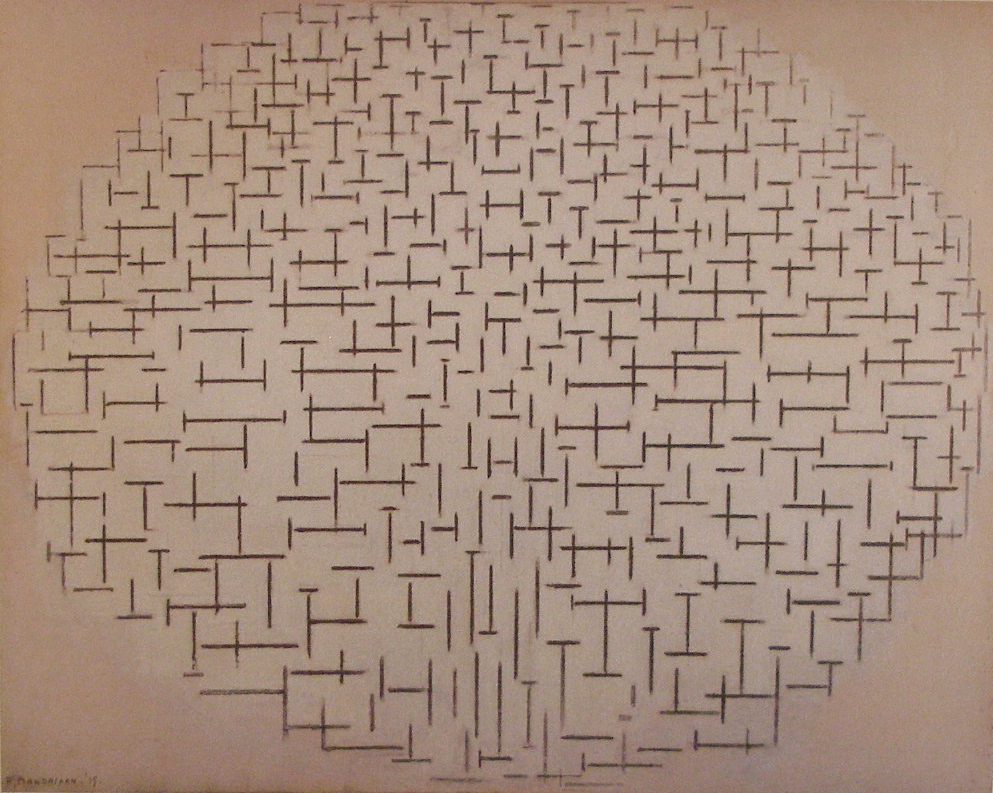Mondrian’s dedication to refining the consideration of spatial planes as presented by Cezanne is most impressive and it the beginning of his journey towards abstraction. It is important to note that most abstract art has a figurative base, and I think it is fair to say Mondrian was one of the few who managed to venture beyond the figurative, which will take a few years for him to achieve.
In this painting we see the early steps of his journey by reducing and raising the subject matter towards the picture plane. He also breaks the space into planes as well which unifies the subject matter and the space it occupies
This wonderful refinement of cubism is truly a great step in art which is still difficult for many to accept, and I think it is much closer to our reality than traditional depiction or perspective. We don’t live in a world with perspective because we and every thing else are constantly moving through time, and in painting, spatial planes provide the viewer the ability to move around, (in their minds), in the paintings.
Mondrian, Picasso, Braque and other notable artists of the time, understood this, and journeyed through the door Cezanne presented to them, leading the way to the wonderful world of twentieth century painting.
I

